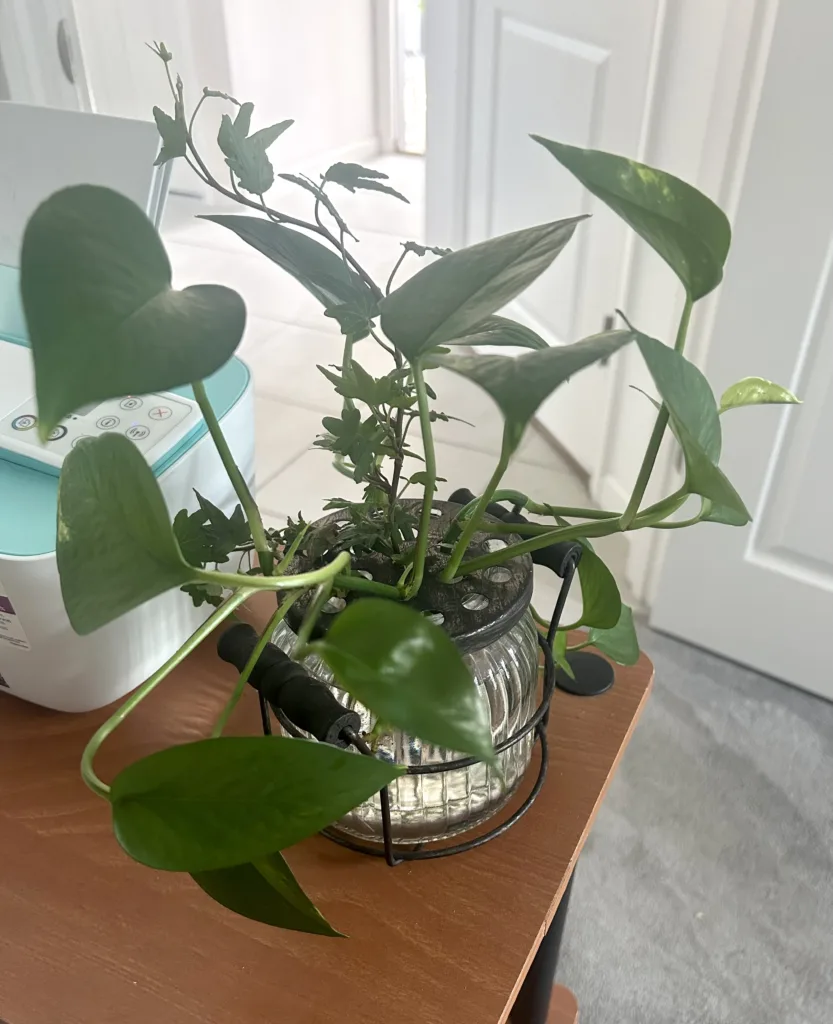Are you looking for a plant that can transform your indoor space with its majestic presence while also being easy to care for? Look no further than the Philodendron Majesty! This beautiful plant is a perfect addition to any home and offers many benefits, including improving air quality and reducing stress. In this post, we will guide you through the essentials of growing and maintaining a Philodendron Majesty, including pot type, soil type, light requirements, water requirements, fertilizer, and how to propagate it.
Pot Type for Philodendron Majesty
Choosing the right pot for your Philodendron Majesty is vital for its growth and development. Experts recommend that you use a pot that is one size larger than the current pot, allowing the plant to grow freely. Make sure that the pot has adequate drainage holes at the bottom to prevent water from accumulating in the soil. Plastic pots are the most commonly used pots as they retain moisture, but clay or terracotta pots both look great and allow for better aeration of the soil.
Soil Type for your Philodendron
As with any houseplant, choosing the right soil is essential to ensure strong roots and healthy growth. Philodendron Majesty plants prefer well-draining soil that is slightly acidic. You can make your potting mix by combining one part peat moss with one part perlite and one part potting soil. The use of perlite allows the soil to drain well, avoiding waterlogging, while peat moss helps maintain moisture levels.
Light Requirements
Philodendron Majesty plants require bright but indirect light to grow well. Place them near a west-facing or south-facing window where they can receive filtered light throughout the day. However, if you put the plant in direct sunlight, its leaves may burn, causing discoloration and damage. If your house lacks enough natural light, use grow lights. These can provide the necessary light spectrum for plants to grow even in low light conditions.
When to Water
Watering your plant is necessary, but it is essential to water it correctly. Overwatering can lead to root rot, which is the most common cause of death in Philodendron Majesty plants. Check the soil’s moisture before watering and only water the plant if the soil feels dry to the touch. Water your plant more frequently during hot summers and skip watering in winter. During the winter months, the plant’s growth slows down, and your watering frequency should be reduced to avoid overwatering.
Fertilizer Needs
To keep your Philodendron Majesty healthy, regular fertilization will help. Use a liquid houseplant fertilizer or a slow-release fertilizer once a month during spring and summer. In winter, reduce the application frequency by half. Avoid over-fertilizing as it can cause root burn. Signs of over-fertilizing include stunted leaves and wilting of the plant.
Propagating your Philodendron Majesty
Philodendron Majesty plants can be propagated through stem cuttings. Choose a healthy stem, cut it a few inches below the node, and place it in water in a propagation station. Once roots start growing, transplant your new plant in a pot using a well-draining potting mix. Keep the soil moist and place your new plant in bright but indirect light.
Happy Gardening!
Growing and maintaining a Philodendron Majesty is an excellent choice for gardening enthusiasts. Understanding the pot type, soil type, light requirements, water requirements, fertilizer, and propagation methods will help you to keep your plant healthy and thriving. By following the tips and tricks outlined in this post, you can enjoy a healthy and beautiful Philodendron Majesty and reap its many benefits. So, what are you waiting for? Get your Philodendron Majesty today and start your journey towards a greener, more vibrant home!
Please be sure to check out my Gardening Blog Post Page for more tips on all types of gardening. Including Seed Saving, Seed Starting, Orchids, Water Gardening, Coldframe Gardening, Indoor Bulb Gardening, Hydroponics, Container Gardening, Mums, Herbs, African Violets, planting Bulbs, Flower Gardening, Vegetable and Fruit Gardening, Indoor Houseplants of all kinds, Cactus, Succulents, Hanging plants, Deer resistant plants and even Bird, Bee, Butterfly and Hummingbird Gardens!


